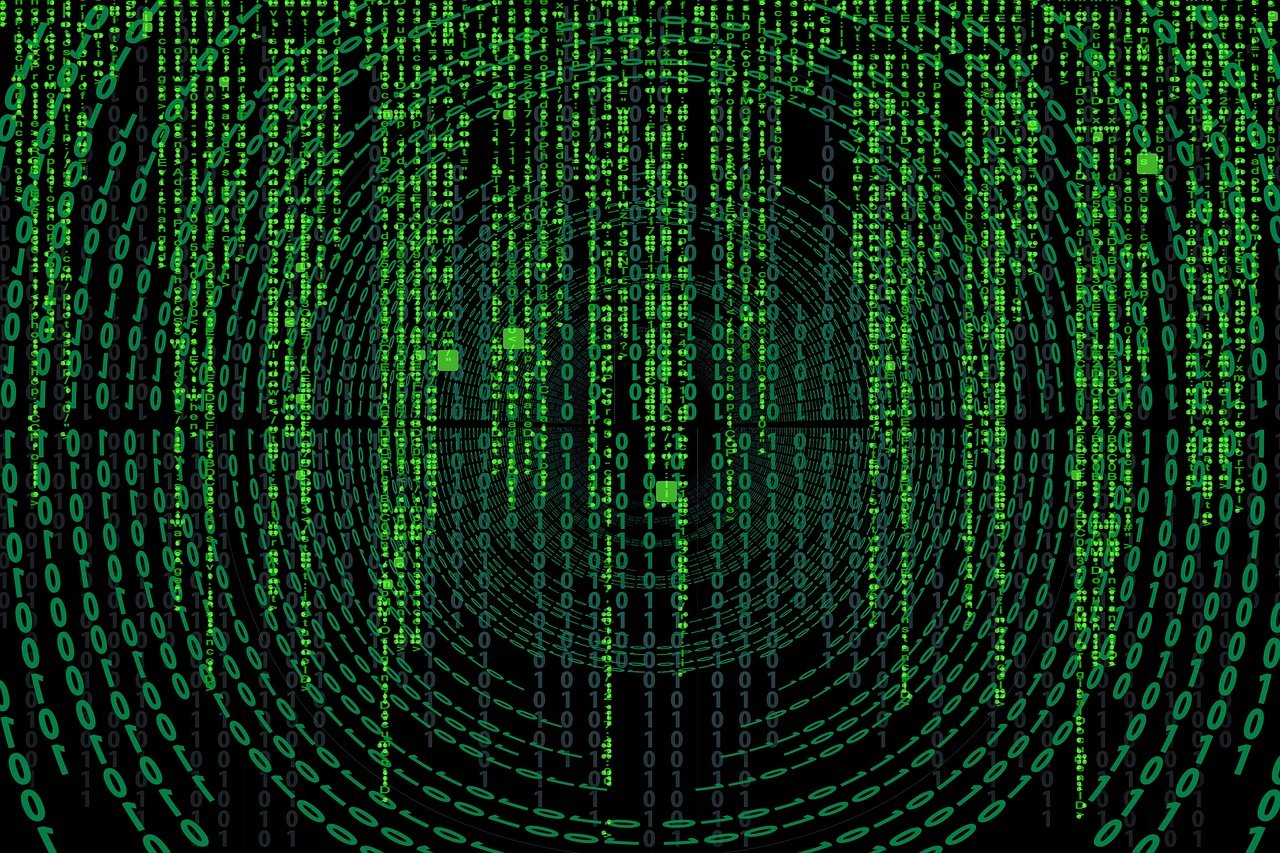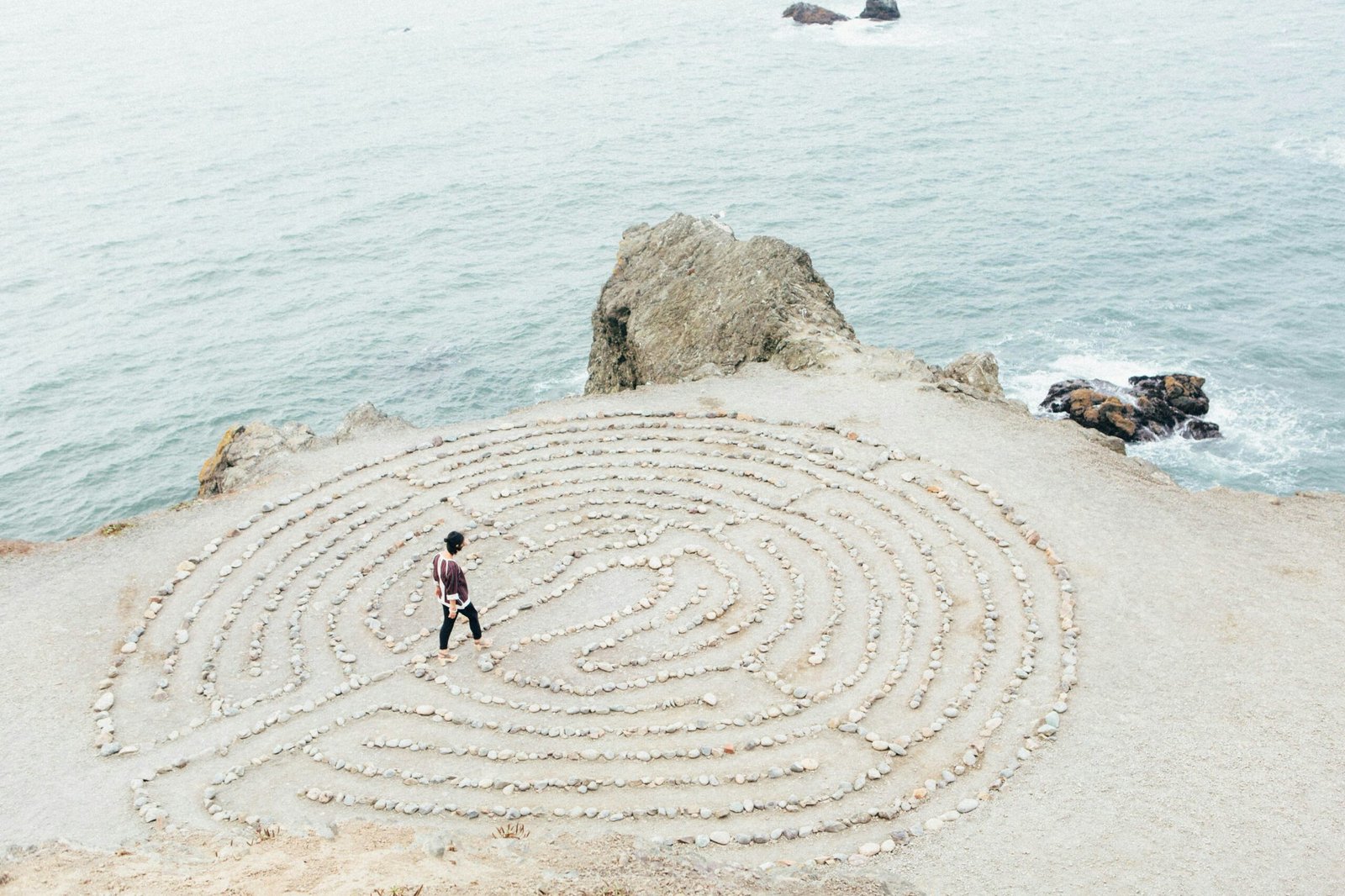Introduction to The Matrix
‘The Matrix’ serves as a multi-faceted concept that straddles both the spheres of popular culture and deeper philosophical discourse. Originating from the iconic 1999 film directed by the Wachowskis, The Matrix has since grown to symbolize a broader metaphor in examining realities and illusions. In the context of the movie, The Matrix is depicted as a simulated reality, constructed by intelligent machines to subjugate humanity, seamlessly blending themes of dystopian control and digital surveillance.
Apart from its cinematic roots, The Matrix has evolved into a poignant metaphorical concept. It engages with the idea of a ‘reality’ that is artificially constructed, often to exert control over our consciousness and perceptions. Such a view is instrumental in understanding the mechanisms of simulated reality, where life as we know it might be an intricate facade designed to manipulate our experience.
Moreover, The Matrix provokes critical thought about the nature of consciousness itself. It suggests that our awareness and experiences could be pre-programmed by unseen forces, challenging the distinction between what is real and what is an illusion. This can extend to philosophical inquiries into the nature of free will, agency, and the extent to which our choices are genuinely our own or influenced by external, often hidden, systems of control.
In essence, The Matrix becomes a lens through which the complexities of simulated realities, control mechanisms, and the essence of consciousness are explored. Whether viewed as a gripping narrative on the silver screen or a thought-provoking metaphor, The Matrix continues to inspire dialogue and critique on the foundational aspects of reality and human experience.
The Concept of The Matrix Beyond the Film
The Matrix, much beyond its cinematic portrayal, has become a powerful metaphor for various interpretations in contemporary discourse. It serves as a multifaceted allegory, often symbolizing the complex dynamics of societal control. Many see The Matrix as a representation of how institutional frameworks – governments, corporations, and other power structures – exert control over the masses. This control manifests in the suppression of individual thought and the fabrication of an illusory realm where freedom of choice is but a mere illusion.
Philosophically, The Matrix ties into the age-old debate of reality versus illusion. Thinkers and theorists have long grappled with what constitutes true reality. This narrative finds roots in the works of philosophers like Plato, particularly his Allegory of the Cave, which posits that individuals are constrained to a perceived reality, blinded from the true world by shadows and echoes manipulated by others. This allegorical structure draws direct parallels to the idea of inhabitants within The Matrix, who unknowingly live in a simulated environment carefully crafted to obscure genuine truths.
Furthermore, various conspiracy theories have burgeoned around the concept of The Matrix. These theories often suggest that reality as we know it is an elaborate construct designed to maintain control over human consciousness. Proponents of these theories argue that advanced technologies or higher dimensional beings could be manipulating our sensory experiences, rendering our perceived reality a mere digital simulation or a controlled psychological environment.
Such discussions also invoke parallels with the notion of false consciousness in Marxist theory, where the ruling class imposes its ideology upon the proletariat, systematically obscuring the true nature of their exploitation. Here, The Matrix metaphor becomes a critique of capitalist societies, stressing how the deception hinders the proletariat from awakening to their real condition.
In summary, The Matrix transcends its origins as a cinematic wonder and transforms into a profound allegory for exploring themes of control, resistance, and the quest for genuine freedom in an increasingly complex world. By bridging philosophical inquiries and conspiracy theories, it continues to provoke thought and challenge our understanding of reality.
Historical Perspectives on Spiritual Possession
Ancient civilizations frequently grappled with the concept of spiritual possession, attributing inexplicable human behaviors to the influence of spirits or demonic forces. Across diverse cultures, these interpretations were often embedded within the broader framework of their religious and spiritual beliefs. Examining the documentation from civilizations such as Mesopotamia, Egypt, Greece, and indigenous tribes unearths a myriad of fascinating perspectives on this phenomenon.
In Mesopotamian society, spiritual possession was often associated with deities or malevolent spirits. Early texts, like the Assyrian tablets, detailed rituals conducted by priests to exorcise these entities, signifying a deep-seated belief in the manipulative power of unseen forces. Similarly, ancient Egyptians held that possession was a manifestation of divine will, with the gods choosing to inhabit particular individuals. Evidence of this is found in their medical papyri, which combined both medical and magical remedies to treat those afflicted by spirits.
Greek mythology also teems with accounts of spiritual possession, often framed within the context of divine communication. The Oracle of Delphi, for example, was believed to channel Apollo, delivering messages while under his influence. Philosophers like Plato discussed possession not merely as a physical condition but as a metaphysical experience that could convey higher truths. This duality of fear and reverence towards possession marked a significant commonality with other cultures.
Indigenous cultures around the world, including Native American and African tribes, viewed possession through a different lens. It was often seen as a vital part of shamanic traditions where the shaman acted as a vessel for ancestral spirits or natural forces. The distinctions lay in their interpretation of possession not solely as a malevolent occurrence but as an integral element of spiritual and communal life, thus fostering a harmonious relationship with the spiritual realm.
Despite these variations, a recurring theme across many ancient cultures was the belief in the tangible impact of spiritual entities on human health and behavior. Whether through reverence, fear, or necessity, spiritual possession has consistently served as a conduit for exploring the mysteries of human existence and its intersection with the supernatural.
Modern Understandings of Spiritual Host and Possession
In contemporary society, the interpretation of spiritual host and possession phenomena has evolved, incorporating insights from modern psychology and psychiatry. Professionals in these fields often approach these experiences from scientific and medical perspectives, offering explanations rooted in mental health. Conditions such as dissociative identity disorder (DID) and psychosis are frequently cited in relation to reported cases of possession. These disorders, characterized by disruptions in a person’s sense of identity or reality, can produce symptoms that are interpreted as spiritual intrusion in various cultural contexts.
Modern psychology posits that such manifestations might stem from traumatic experiences, stress, or subconscious conflicts. These are seen more as mental health issues than spiritual invasions. Therapists and psychiatrists aim to treat these conditions with a combination of therapy, medication, and other interventions tailored to the individual’s needs. This scientific stance provides a framework for understanding possession without attributing it to external spiritual forces.
However, it is imperative to recognize that many cultures and communities continue to hold traditional beliefs in spirits and demonic forces. These perspectives are deeply ingrained in cultural, religious, and societal frameworks. For instance, in certain Indigenous, African, and Asian cultures, spiritual possession remains a potent belief, often playing a crucial role in community practices and rituals. Shamans, priests, and spiritual healers are typically sought out to address and manage these experiences. They serve as mediators between the physical world and the perceived spiritual realm, providing culturally relevant support that resonates with the affected individuals’ belief systems.
Therefore, modern interpretations of spiritual host and possession reflect a complex interplay between scientific explanations and enduring traditional views. While psychology and psychiatry offer valuable insights and treatments, the persistence of cultural beliefs underscores the importance of a holistic approach. Understanding and addressing these phenomena necessitate acknowledging both medical and spiritual dimensions, respecting diverse perspectives to effectively support those affected by possession experiences.
Indicators and Manifestations of Being a Host
Throughout history, various spiritual traditions and modern clinical interpretations have identified a range of indicators and manifestations that suggest an individual may be hosting spirits or demonic forces. The signs and symptoms associated with this phenomenon often span physical, emotional, and behavioral aspects of one’s life, offering a comprehensive picture of the experience.
Physical Indicators
From a physical standpoint, being a host can entail unexplainable ailments that seem resistant to traditional medical treatment. Common physical manifestations include perpetual fatigue, sudden and severe body pain, and changes in appearance such as sunken eyes or an unkempt look. In certain spiritual practices, these physical indicators are seen as the bodily manifestation of the internal struggle between the individual and the invasive force. For instance, ancient texts often document fever, skin ailments, and other inexplicable health issues as signs of such disturbances.
Emotional and Behavioral Indicators
Emotional fluctuations and behavioral changes are also telltale indicators of hosting spirits or demonic forces. Individuals may experience severe mood swings, periods of intense depression, or inexplicable fits of rage. These emotional disturbances often correlate with behavioral anomalies such as social withdrawal, erratic actions, and even self-destructive tendencies. Spiritual traditions frequently highlight the presence of overwhelming feelings of dread or a pervasive sense of hopelessness as significant indicators. In contrast, modern clinical interpretations might describe these symptoms in terms of psychological distress or mental health disorders.
Integration of Spiritual and Clinical Insights
Interestingly, both spiritual and clinical perspectives often intersect in their acknowledgment of specific symptoms, yet they diverge in their explanations and treatments. For example, spiritual frameworks might view recurring nightmares, voices, or visions as evidence of spiritual possession, advocating for rituals and prayers as interventions. Modern clinical psychology, however, may attribute these experiences to dissociative disorders or extreme stress, recommending psychotherapy and medical treatment. Integrating these insights can provide a more nuanced understanding of the indicators and manifestations of being a host, facilitating a more holistic approach to addressing these complex phenomena.
Case Studies and Anecdotal Evidence
Examining real-life case studies and anecdotal evidence provides a broader understanding of how individuals and communities perceive and deal with the notion of being hosts for spirits or demonic forces. Varied examples from different cultures and historical contexts shed light on the profound influence these beliefs have had on people’s lives.
One prominent case is that of Anneliese Michel, a young German woman who, in the 1970s, was believed by her devout Catholic family to be possessed by multiple demonic entities. Despite medical diagnoses of epileptic psychosis, Michel’s case proceeded to a widely publicized exorcism, ultimately leading to her death. This tragic event highlighted the schism between religious beliefs and modern medical science, leaving a lasting impact on German society’s approach to such phenomena.
In another example from the indigenous culture of the Yanomami people in the Amazon Rainforest, shamanic practices play a vital role in their daily lives. Shamans, who are perceived as intermediaries between the spiritual and physical worlds, often perform rituals to expel malevolent spirits believed to cause illness or misfortune. These practices underline how deeply ingrained spiritual beliefs influence healthcare and social structures within the Yanomami community.
Additionally, the 19th-century case of Mary Roth in Watseka, Illinois, presents another intriguing instance. Believed to be possessed by the spirit of Lurancy Vennum, Mary displayed behaviors and knowledge that were inexplicable by contemporary standards. This case, known as the Watseka Wonder, became a cornerstone in the study of spiritualism in America, demonstrating a blend of psychological, spiritual, and societal complexities.
Such cases, across different cultures and epochs, illustrate the diverse ways that beliefs in spiritual possession shape individual experiences and community responses. Whether viewed through a religious, cultural, or psychological lens, these narratives offer insight into the enduring human fascination with the unseen forces that are thought to influence our reality.
Exorcisms and spiritual cleansings have long been integral practices in various religious traditions aimed at expelling spirits or demonic forces from individuals believed to be possessed. Known for their intense rituals and profound spiritual implications, these ceremonies often draw upon ancient traditions, sacred texts, and the expertise of religious leaders.
One of the most famous exorcisms is that of Anneliese Michel, a young German woman whose case in the 1970s drew widespread attention. Undergoing numerous exorcisms performed by priests, her story sparked debates about the nature of possession and the role of religion in addressing mental health issues. Another notable case is the exorcism of Robbie Mannheim in 1949, which inspired the iconic film, “The Exorcist.” These historical exorcisms underscore the profound cultural impact and intrigue surrounding these practices.
Exorcism rituals typically involve a combination of prayers, invocations, and sometimes physical actions designed to drive out the believed evil presence. Prayer and the use of holy items such as crucifixes or holy water are common elements. The religious leader, often a priest, serves as the facilitator of these rituals, invoking divine or spiritual power to aid in the cleansing process.
In contrast to these traditional practices, contemporary psychological treatments for symptoms that some might attribute to possession focus on clinical mental health approaches. Disorders such as dissociative identity disorder or severe psychosis may present symptoms that resemble those described in possession cases. Mental health professionals employ psychotherapy, medication, and other evidence-based treatments to address the underlying psychological causes, viewing these symptoms within a scientific framework rather than a spiritual one.
While modern psychology offers a secular, scientific approach to what might traditionally be considered spiritual afflictions, exorcisms and spiritual cleansings continue to have cultural and religious significance for many. These practices serve not only as a method of addressing perceived demonic influences but also as a testament to the enduring human quest for understanding and overcoming the inexplicable.
In exploring the intricate tapestry of “The Matrix,” we have delved into its multifaceted concept and how spirits and demonic forces may influence it. This understanding broadens our comprehension not only of a fictional universe but also of our own reality and consciousness. By analyzing these themes, we’ve seen how the boundaries between the physical and spiritual worlds blur, ultimately affecting one’s perception of existence. The notion of “The Matrix” serves as a metaphor for a controlled environment where true awareness is obscured, prompting us to question the nature of our reality.
A key takeaway is recognizing the potential impact of spiritual and demonic influences on our lives. This awareness compels us to be vigilant and maintain critical thinking about the information we consume and the beliefs we hold. It is essential to consider that various philosophies and spiritual teachings often suggest the presence of unseen forces that can manipulate our perception and decisions.
Reflecting on “The Matrix” encourages us to assess our own beliefs and experiences. Are we truly free in our thinking, or are we confined by unseen limitations imposed by societal norms, media, or even spiritual entities? This line of questioning is crucial for personal growth and autonomous thinking. By becoming more spiritually and intellectually aware, we can better navigate the complexities of our own “Matrix,” striving to achieve a more genuine and enlightened existence.
Ultimately, this discussion beckons us to critically analyze our own reality and the spiritual dimensions that might influence it. Understanding “The Matrix” in this context serves as a powerful tool for fostering introspection and encouraging a more profound engagement with our consciousness and the unseen forces at play. Whether one views these influences through a religious, philosophical, or metaphysical lens, recognizing their possible existence brings us a step closer to breaking free from our own metaphorical Matrix.






Leave a Reply